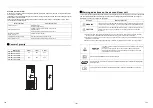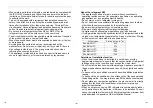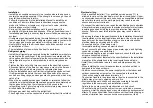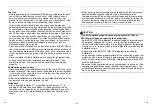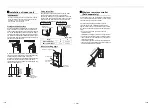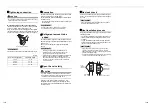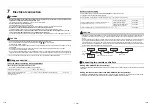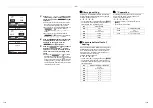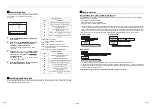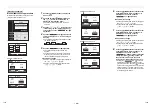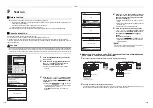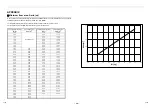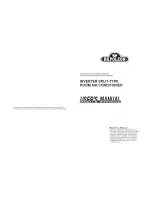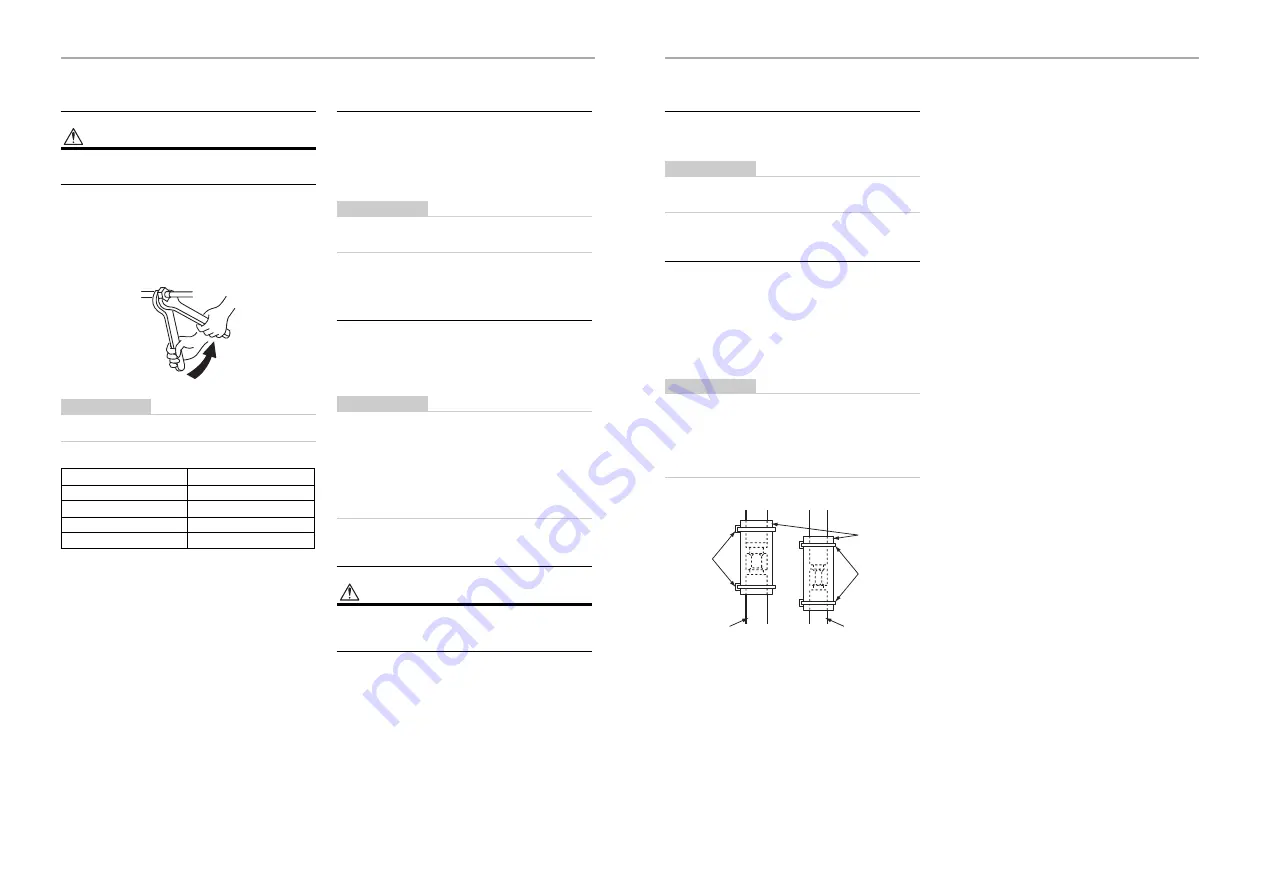
– 13 –
Tightening connection
CAUTION
Do not apply excessive torque. Otherwise, the nut may
crack depending on the conditions.
▼
Tightening torque of flare pipe connections
Incorrect connections may cause not only a gas leak,
but also a trouble of the refrigeration cycle.
Align the centers of the connecting pipes and tighten
the flare nut with your fingers. Then tighten the nut with
a spanner and torque wrench as shown in the figure.
REQUIREMENT
Tighten the nut within the specified tightening torque.
Evacuation
Perform vacuuming from the charge port of valve of the
outdoor unit by using a vacuum pump.
For details, follow to the Installation Manual attached to
the outdoor unit.
• Do not use the refrigerant sealed in the outdoor unit
for evacuation.
REQUIREMENT
For the tools such as charge hose, use those
manufactured exclusively for R32 or R410A.
Refrigerant amount to be
added
For addition of the refrigerant, add refrigerant “R32 or
R410A” referring to the attached Installation Manual of
outdoor unit.
Use a scale to charge the refrigerant of specified
amount.
REQUIREMENT
• Charging an excessive or too little amount of
refrigerant causes a trouble of the compressor.
Charge the refrigerant of specified amount.
• A personnel who charged the refrigerant should write
down the pipe length and the added refrigerant
amount in the F-GAS label of the outdoor unit. It is
necessary to fix the compressor and refrigeration
cycle malfunction.
Open the valve fully
CAUTION
A brazed, welded, or mechanical connection shall be
made before opening the valves to permit refrigerant to
flow between the refrigerating system parts.
Open the valve of the outdoor unit fully. A 4 mm-
hexagonal wrench is required for opening the valve.
For details, refer to the Installation Manual attached to
the outdoor unit.
Unit: N•m
Outer dia. of copper pipe
Tightening torque
6.4 mm
14 - 18
9.5 mm
34 - 42
12.7 mm
49 - 61
15.9 mm
68 - 82
Work using two spanners
Gas leak check
Check with a leak detector or soap water whether gas
leaks or not, from the pipe connecting section or cap of
the valve.
REQUIREMENT
Use a leak detector manufactured exclusively for HFC
refrigerant (R32, R410A, R134a).
Heat insulation process
Apply heat insulation for the pipes separately at liquid
side and gas side.
• For the heat insulation to the pipes at gas side, use
the material with heat-resisting temperature 120 °C
or higher.
• To use the attached heat insulation pipe, apply the
heat insulation to the pipe connecting section of the
indoor unit securely without gap.
REQUIREMENT
• Apply the heat insulation to the pipe connecting
section of the indoor unit securely up to the root
without exposure of the pipe. (The pipe exposed to the
outside causes water leak.)
• Insulate the refrigerant pipe in the indoor unit securely
up to the point shown in the following figure.
Heat
insulator
(Accessory)
Gas side
pipe
Heat
insulator
(Accessory)
Binding band
(Accessory)
Liquid side pipe
25-EN
26-EN



